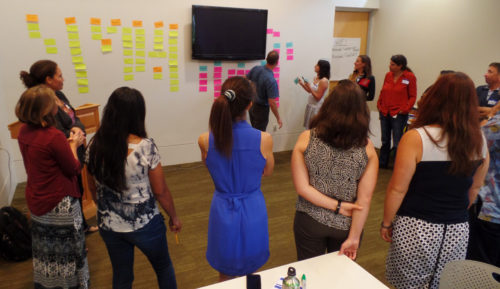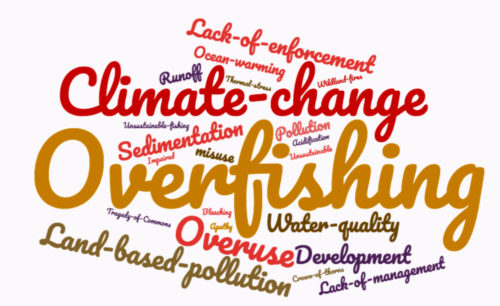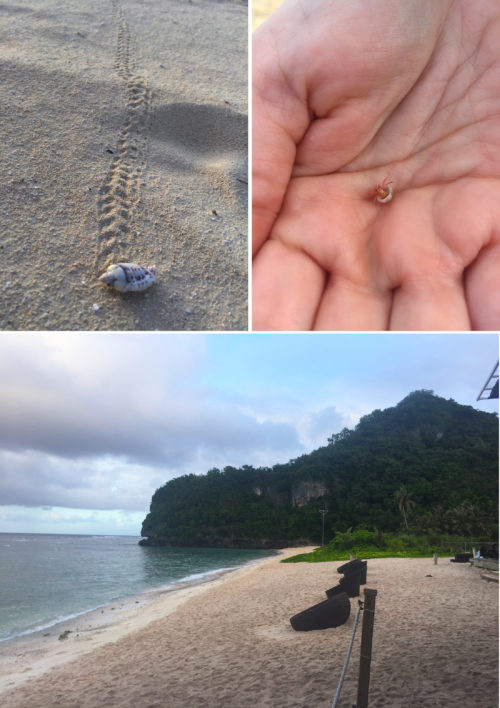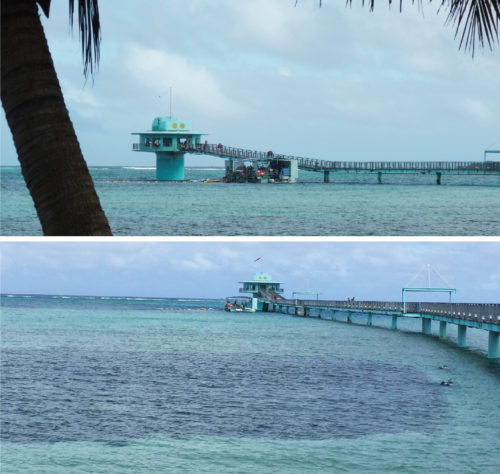The first thing people ask: Where is Guam, anyway?
Caroline Donovan ·Guam is in the western Pacific Ocean, approximately equidistant from Tokyo (north), Manila (west), and Papua New Guinea (south). And, on January 28th, Heath Kelsey, Alex Fries, and I traveled to Guam from Hawaii. Guam is a U.S. territory and is one island in the chain of islands that make up the Mariana archipelago. Guam has a population of approximately 165,000, but with several military bases and a strong tourism business, the number of people on the island can fluctuate significantly.

We were on the island to facilitate a workshop about producing an ecosystem report card for Guam’s coral reefs. During the report card workshop, we learned the key values and key threats to the coral reefs surrounding Guam. Values include tourism, shoreline protection (Guam is often hit by typhoons), food (both for subsistence and tourism) and fishing. Two main threats, overfishing and climate change, impact the coral reefs of Guam. Overuse and direct damage as well as land-based sources of pollution contribute to degraded coral reefs.



While threats and values tell part of the story, more key messages came to the surface during the report card storyboarding on the second day. The key takeaways about coral reefs in Guam are: Guam’s reefs are under threat from high residential population and continued growth in tourism. There is a heavy military presence on the island as well, which also impacts coral reefs. But, there are community monitoring and restoration activities that will help protect coral reefs from land-based sources of pollution. Marine sanctuaries and protection of nursery areas will improve fishing resources as well.


While we did not have as much time on Guam as we would have liked, Heath, Alex, and I did manage to snorkel in two different areas on the northwest coast of Guam. Piti Beach is a famous scuba diving and snorkeling area where you can see a large variety of fish and corals. There are also healthy beds of seagrasses that provide shelter and food for fish, sea turtles, and other aquatic animals.

If there’s one thing we missed, it was touring the entire island. Even though Guam is just a blip in the middle of the Pacific Ocean, there is a diversity of people, culture, habitats, and activities that implies an international stopping point for all countries. We couldn’t fit everything into our short two and a half days, but we do know we liked what we saw.
About the author
Caroline Donovan

Ms. Caroline Donovan oversees program and project management, science communication, and data analysis at UMCES-IAN. She has over 15 years of experience with ecosystem health report cards, science communication products, stakeholder engagement, and citizen science and volunteer monitoring. Ms. Donovan has worked extensively in the fields of science integration and communication, facilitation, and program management and administration. Ms. Donovan received a Bachelor of Science in Biology from University of North Carolina - Wilmington in 2002 and a Master of Science in Biological Oceanography from University of Maryland - College Park in 2005.

